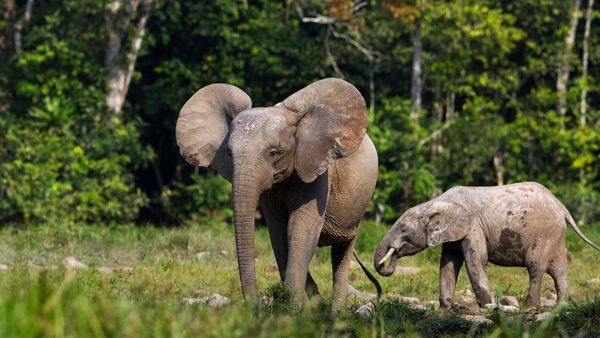African forest elephants exhibit complex social structures, existing in small communities known as herds. These herds consist of several related individuals, including adult females and their offspring.
The size of the herds can vary, with some groups comprising only a few elephants, while others may consist of up to 20 individuals.
Within these herds, there is a hierarchical structure, with a matriarch leading the group. The eldest female — which is likely also the most experienced — guides the herd in search of food, water and suitable habitats.
Mating Behavior and Gestation Period
African forest elephants have a unique mating behavior that occurs year-round, although researchers have observed the highest density of mating activity from October through May (the wet season).
Male elephants go through something called musth — a sudden increase in testosterone — for two to three months. Musth is characterized by increased aggression and heightened sexual activity.
Females typically veer towards mating with males that are in musth and around 35 years of age. After mating, female elephants undergo the longest gestation period of any living mammal: a remarkable 22 to 24 months.
Slow Reproduction: A Challenge for Population Recovery
The slow reproductive rate of African forest elephants poses a significant challenge for population recovery. Females become sexually mature between the ages of 14 and 17, while males take even longer, often not reproducing until they reach 25 to 30 years old.
This slow reproductive rate, coupled with other threats such as poaching and habitat loss, impedes the rebound of forest elephant populations. Efforts to conserve and protect these magnificent creatures must consider their unique reproductive biology and the need for long-term strategies to ensure their survival.


